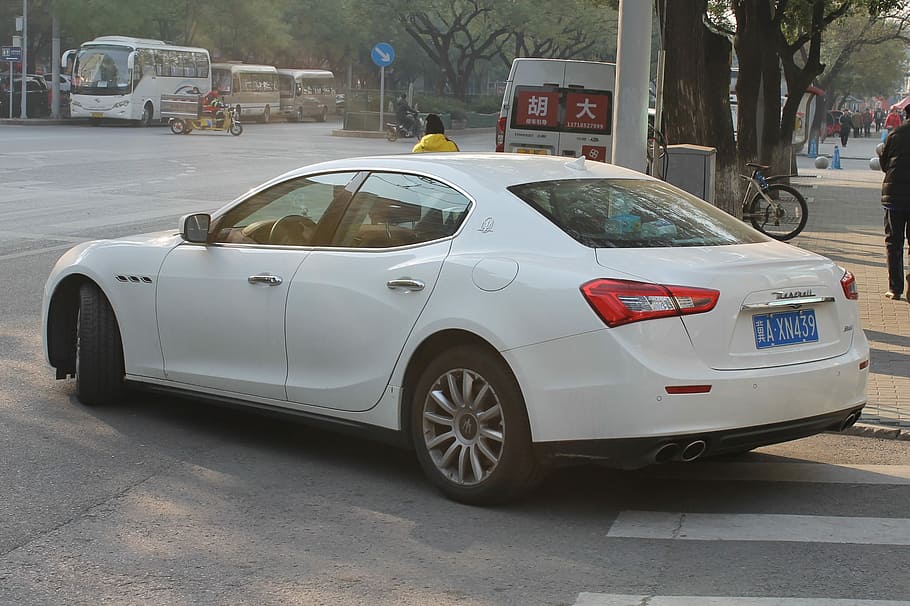In 1984, the low-cost Scooter model was discontinued, but kept for Chevettes made for Canada. The T1000 was renamed Pontiac 1000 in 1983 both in the united states and Canada. In 1986, the Chevette base mannequin was discontinued, leaving only the CS and the S, which featured a 3rd brake mild, an instrument cluster "service engine soon" light, replacing the "verify engine" mild, and a new bowtie emblem on the front grille. The Scooter hatchback included a rear seat, while offering a rear-seat delete option. The Sandpiper trim package included a "reef"-patterned inside, deluxe door trim, cream gold or antique white exterior colours, and an exterior Sandpiper emblem simply behind every door.
Mile Survivor: 1978 Chevrolet Chevette
In 1982, models featured a five-speed manual transmission possibility on gasoline-powered two-door vehicles (standard with diesel). New GM THM-180C (THM200C for diesel model) automatic transmissions, which included a locking torque converter for higher fuel mileage, have been out there. Introduction of a pump-driven AIR system in the late mannequin year changed PAIR to help effectivity of the catalytic converter. A new catalytic converter was launched with an air inlet for pressured air injection from the air pump. A new one-piece cardboard-based headliner with an up to date overhead dome gentle replaced the sooner vinyl liner. The Pontiac T1000 obtained a novel grille, physique molding, and horizontal lined taillights, in addition to an alloy sport wheel choice. General Motors of Canada's Pontiac Acadian, a rebadged Chevette, acquired all the T1000's Pontiac-exclusive features from this point on.
 In 1979, the Holley two-barrel carburetor became standard on all fashions. The entrance fascia was revised with a flat hood, no longer wrapping all the method down to the bumper. New for 1979 was a large chrome grille with Chevrolet's "bow-tie" emblem and rectangular headlights. A new air-injection system was launched to enhance catalytic-converter perform at idle. An active passenger-restraint system was introduced in small numbers as an option which featured a lower hanging dashboard, computerized seatbelts, and a center-dash console. Chevette sales totaled more than 451,000 units – a determine that might rank it second only to Chevrolet's new Citation, which had a for a lot longer model run (sales had began in April 1979). Consumer Guide testers managed "an trustworthy 29 mpg in the metropolis and 39 mpg on the highway".
In 1979, the Holley two-barrel carburetor became standard on all fashions. The entrance fascia was revised with a flat hood, no longer wrapping all the method down to the bumper. New for 1979 was a large chrome grille with Chevrolet's "bow-tie" emblem and rectangular headlights. A new air-injection system was launched to enhance catalytic-converter perform at idle. An active passenger-restraint system was introduced in small numbers as an option which featured a lower hanging dashboard, computerized seatbelts, and a center-dash console. Chevette sales totaled more than 451,000 units – a determine that might rank it second only to Chevrolet's new Citation, which had a for a lot longer model run (sales had began in April 1979). Consumer Guide testers managed "an trustworthy 29 mpg in the metropolis and 39 mpg on the highway".Chevrolet Chevette
In 1983, the Chevettes had a makeover for the entrance and rear fasciae, and the Chevette CS was launched. Scooter and base Chevettes featured black bumpers and finish caps, whereas the higher-end Chevette CS models included color-keyed bumpers and caps with chrome bumper inserts as an possibility. Scooter and base fashions featured a black-only grille and headlight buckets, whereas CS models featured argent-colored trim. The Chevette S mannequin launched a beauty bundle that included black-painted styled-steel wheels and a red-accented grille and moldings, in addition to oversized decal emblems in red. Front bucket seats featured new adjustable knobs on the edges, however lost the reclining levers of previous years. Interior trim was additionally blacked out with new black door handles and black plastic window regulators.
Por otra parte, la situación del motor encarece la refrigeración, ya que el radiador debe estar ubicado tal es así que el aire exterior impacte en él lo que supone usar un sistema más o menos complejo de canalizaciones de aire y bombeo de agua. Adolf Hitler, por entonces canciller de Alemania, y quién fue uno de los inspiradores del diseño,[3] ideó una red de autopistas diseñadas para unir a todo el país por carretera velozmente (después el sistema se extendería hasta Suiza y Austria). Venda de carros usados entrada se pensó que la agilidad máxima debía ser de 160 km/h, si bien por último se optó porque fuera ilimitada. Esta red, que se llamaría Autobahn, estaría compuesta por calzadas de tres carriles por cada sentido, con una anchura mínima de unos 2,5 metros cada carril; 6 dm de cemento bajo la cubierta de asfalto; curvas bien peraltadas y barreras de seguridad a ambos lados de la calzada. Pero se encontró con el inconveniente de que la mayor parte de la población alemana carecía de automóvil. El nombre que se adoptaría en principio para el modelo sería KdF-Wagen, que significa algo tal como "Por fuerza por la alegría", o Fuerza por medio de la alegría. El carrocero alemán de Osnabrück diseñó en 1949 el modelo a solicitud de Volkswagen, y concibió un cuatro plazas en exactamente la misma línea estética del modelo completamente carrozado.






